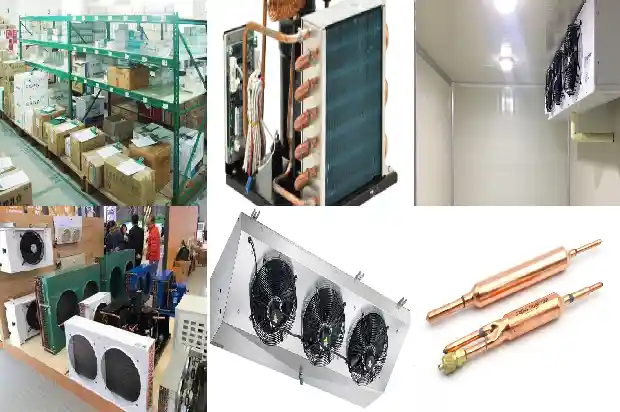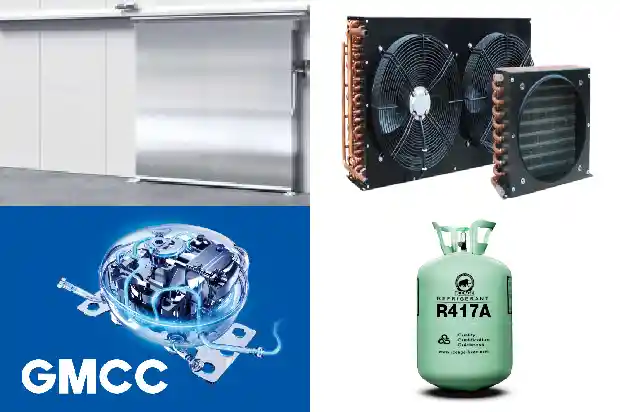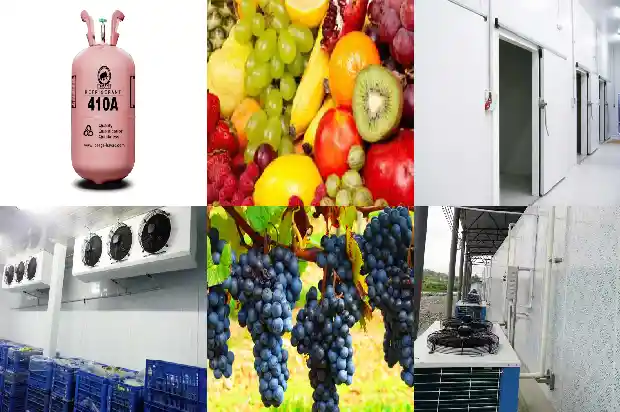Technology: Dry, Flooded and Falling Film Evaporators!
2024-12-19
Today, let's compare and understand the differences among dry evaporators, flooded evaporators and falling film evaporators.
Dry Evaporators
- Principle and Definition of Dry Evaporators
In dry evaporators, the refrigerant passes through the heat exchange tubes, while the chilled water runs outside the high-efficiency heat exchange tubes. The heat exchange efficiency of such heat exchangers is relatively low, and its heat transfer coefficient is only about twice that of a bare tube. However, its advantages lie in its convenience for oil return and relatively simple control. And the refrigerant charge is approximately 1/2 to 1/3 of that of flooded units. - Characteristics of Dry Evaporators
The refrigerant in dry evaporators flows inside the tubes, while water flows outside the tube bundles. The refrigerant flow usually has several passes. Due to the gradual vaporization of the refrigerant liquid, generally, the higher it goes, the more tubes there are in the flow path. To enhance the heat transfer on the water side, several baffles are arranged outside the heat transfer tubes in the cylinder, so that the water flows across the tube bundles multiple times.
Advantages:
① The lubricating oil enters the compressor along with the refrigerant, and generally there is no oil accumulation problem.
② The amount of refrigerant charged is small, generally only about 1/3 of that of the flooded type.
③ When the evaporating temperature t0 is around 0 °C, the water will not freeze.


Flooded Evaporators
- Principle and Definition of Flooded Evaporators
The operation mode of flooded evaporators is exactly the opposite of that of dry evaporators. The chilled water passes through the heat exchange tubes, and the refrigerant completely submerges the heat exchange tubes and evaporates outside the heat exchange tubes after absorbing heat. There are many pin-shaped holes on the surface of the heat transfer tubes of flooded evaporators, and there are also spiral protrusions on the inner surface of the tubes to enhance the heat transfer on the chilled water side. This kind of high-efficiency heat transfer tube that simultaneously enhances boiling outside the tubes and heat transfer inside the tubes increases the heat transfer coefficient by about five times compared to that of a bare tube.
The term "flooded" means that the refrigerant circulates in the "shell side" of the unit, and the chilled water circulates in the "tube side". Seen from the cross-section, it seems that there is a large amount of refrigerant in the cylinder, and the tube bundles through which water flows are immersed in the refrigerant. It is just the opposite of the "dry evaporator". In the dry type, the refrigerant flows through the "tube side" and water flows through the "shell side", just like the refrigerant tube bundles are immersed in water.
In flooded evaporators, water flows inside the tubes, and the refrigerant evaporates outside the tube bundles, so the heat transfer surface is basically in contact with the liquid refrigerant. Generally, the amount of refrigerant charged in the shell is about 55% - 65% of the effective volume of the cylinder. After the refrigerant liquid absorbs heat and vaporizes, it returns to the compressor through the liquid separator at the top of the cylinder. It is convenient for operation and management and has a relatively high heat transfer coefficient. - Characteristics of Flooded Evaporators
① When the evaporation temperature of the refrigeration system is below 0 °C, the water inside the tubes is prone to freezing, which may damage the evaporation tubes.
② A large amount of refrigerant needs to be charged.
③ Affected by the height of the refrigerant liquid column, the evaporation temperature at the bottom of the cylinder is relatively high, which will reduce the heat transfer temperature difference.
④ Oil will accumulate at the lower part of the evaporator cylinder, and reliable oil return measures must be taken; otherwise, it will affect the safe operation of the system. - Characteristics of Units with Flooded Evaporators
Flooded evaporators and flooded units have higher heat transfer efficiency than dry evaporators/dry units. The approach temperature difference between the outlet water temperature and the evaporation temperature is small, and the resistance along the path is small. They are suitable for units with large circulation volumes (such as centrifugal machines) and have good refrigeration effects. However, a large amount of refrigerant charge is required, and a special oil return system is needed to assist the compressor in oil return.
If the term "water-cooled" is added before the unit name, it refers to the form of the condenser of the unit, whether water cooling or air cooling is adopted, which is divided into air-cooled and water-cooled. If the form of the compressor, such as "reciprocating, screw, centrifugal", is added, then it is the complete naming of the unit.
For example, "water-cooled screw flooded chiller". In most cases, for the sake of simplicity, the names of one or two components may be omitted, and only the names related to the context are mentioned, such as "flooded chiller" (perhaps just to emphasize "flooded").
In the flooded type, the refrigerant flows between the copper tube and the shell tube, while the chilled water flows inside the copper tube. In the dry type, it is just the opposite. The refrigerant evaporates inside the copper tube, and water flows between the copper tube and the shell tube. They are mainly used in heat pump air conditioners. In industrial low-temperature chillers, the ordinary dry evaporators are generally used.
Dry Evaporators VS Flooded Evaporators
Falling Film Evaporators
- Principle and Definition of Falling Film Evaporators
Falling film evaporators, also known as spray evaporators, are similar to flooded evaporators in heat exchangers, but they also have differences from flooded evaporators. The refrigerant of this kind of evaporator is sprayed onto the heat exchange tubes from the upper part of the heat exchanger. The refrigerant only forms a thin refrigerant liquid film on the heat exchange tubes. In this way, the static liquid level pressure is reduced when the refrigerant boils and evaporates, thereby improving the heat exchange efficiency. Its heat exchange efficiency is increased by about 5 compared to that of flooded units.
Falling film evaporation is flow boiling. Due to the small thickness of the liquid film layer on the outer surface of the tubes, there is no elevation of the boiling point caused by static pressure, and the heat transfer coefficient is high.
While in flooded evaporation (that is, immersion evaporation), the bubbles generated are easy to accumulate on the surface of the heat exchange tubes, resulting in a decrease in heat exchange efficiency, and its heat exchange effect is not as good as that of falling film evaporation. Generally speaking, falling film evaporation occurs under the condition of a small temperature difference, but it is necessary to prevent scaling to avoid affecting the heat transfer efficiency.
- Technical Characteristics of Falling Film Evaporators:
(1) Falling film evaporators and flooded evaporators are of the same heat exchange type, but with different liquid levels.
(2) The combination of gravity and the secondary film-forming effect enables tubular falling film evaporators to have a relatively high heat transfer coefficient.
(3) Advanced film distribution design ensures that the refrigerant can be evenly distributed to all heat exchange tubes to form a uniform liquid film.
(4) Specially designed entrainment separators minimize the entrainment of mist in the secondary steam. The careful design of the vapor chamber structure aims to obtain the optimal vapor flow when the secondary steam passes through the entrainment separator.
Related Articles
- What is the Air - conditioner Jet Enthalpy - increasing Technology?
- Refrigeration Technology Sharing - Commissioning of Refrigeration Systems
- Water Flow Control Technology for Small Air-cooled Hot and Cold Water Units
- New Technology: A New Control Method for Throttle Valves in Refrigeration Systems
- Elastocaloric refrigeration: A new type of solid-state refrigeration technology
- What is Indirect Evaporative Cooling Technology?
- Liquid Level Detection and Control of Flooded Evaporators
- All-round Introduction to Condensers and Evaporators!
- Common Causes of Frost Build-up in refrigerant evaporators
